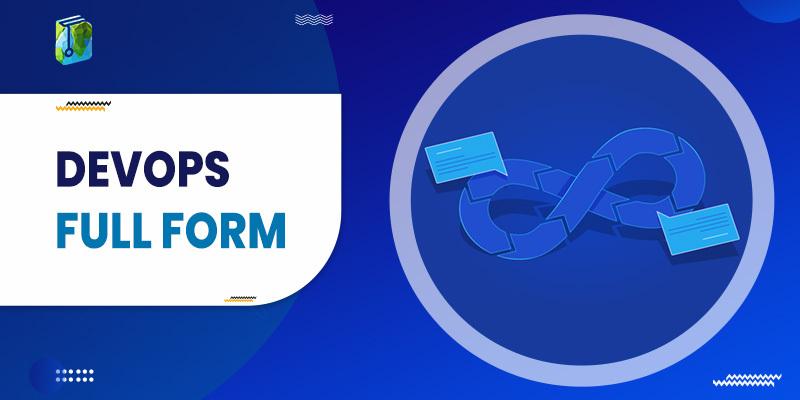DevOps Full Form: DevOps is defined as an IT culture or an IT environment or a software development methodology that tends to improve collaboration between the development and operations teams indulged in the development of software.
The term ‘DevOps’ does not have any full form; rather, the term was derived by Patrick Debois in 2009 by combining the words ‘development’ and ‘operations’.
DevOps Full Form
The implementation of DevOps utilizes technology— especially automation tools that can be used under an increasingly innovative and dynamic infrastructure to shorten a system development life cycle using fast feedback loops to deliver features, more frequent fixes, and updates. It overcomes all the limitations of the traditional waterfall model
Fundamentals of DevOps
Besides many variations, the following are the common DevOps culture-.
Collaboration:
DevOps seeks collaboration not just between the development team and the operations team; rather it recognizes the need for collaboration extending to every stakeholder in the delivery of software (all teams, including test, product management, and executives).
Automation:
Large parts of the end-to-end software development and deployment processes are automated by relying on toolchains.
Continuous Integration:
DevOps culture is believed to be an extension of Agile culture, and continuous integration is a fundamental aspect of the Agile approach. The continuous integration principle of agile development implies the integration of the codes of different developers frequently to avoid conflicts in their work.
Continuous Testing:
The test function in a DevOps environment helps developers to balance quality and speed using automated tools reduces the cost of testing and allows test engineers to utilize their time more effectively. Moreover, continuous testing shortens test cycles by allowing integration testing earlier in the process and eliminates testing bottlenecks through virtualized and dependent services.
Continuous Delivery
When continuous delivery is implemented properly, developers will always have a deployment-ready build procedure that has passed through a standardized test process. Organizations using DevOps achieve multiple deliveries of products per day compared to medium performers who release between once per week and once per month.
Continuous Monitoring
With continuous monitoring, teams measure the deviation in performance and improve the stability of the software. It aims to identify the root causes of issues, prevent outages and minimize user issues.
. DevOps process develops automated CI/ CD pipelines by involving very frequent development, testing, and deployment technologies. Following are some of the famous DevOps tools:
- Jenkins – Automation server, with plugins built for developing Continuous Integration/ Continuous Deployment pipelines
- Selenium – Automation testing
- Docker – Software Containerization Platform
- Kubernetes – Container Orchestration tool
- Puppet – Configuration Management and Deployment
- Chef – Configuration Management and Deployment
- Ansible – Configuration Management and Deployment
- Nagios – Continuous Monitoring
Benefits of DevOps–
- Less software failure.
- Reduced lead time between fixes.
- Multiple deployments improvise the performance of both the employee and the organization he/she is working for.
- The fundamentals of DevOps make employees complete their tasks efficiently and effectively.
Conclusion
DevOps does not have any full form; rather, the term was derived by Patrick Debois in 2009 by combining the words ‘development’ and ‘operations.’ Here is everything you need to know about DevOps in detail.
People Also Reading:

